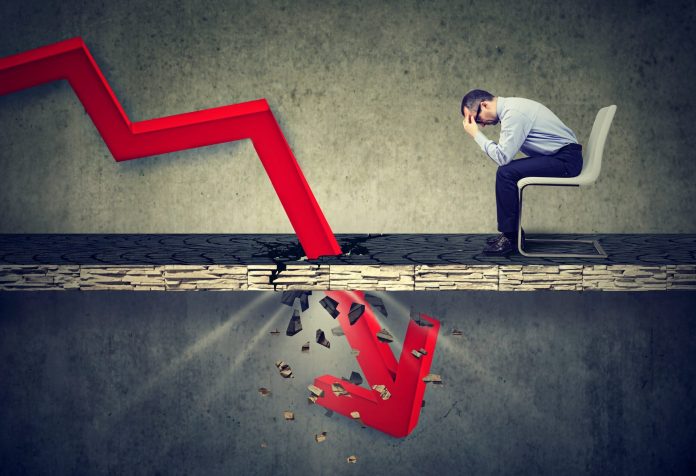The stock market’s having a rough day. Global markets are sliding as investors react to President Trump’s sweeping tariff announcements, with American, European and Asian markets falling sharply.
If you’re an investor — particularly one nearing retirement — these dramatic market swings can be nerve-wracking. But hasty decisions during volatility often lead to regret later. Here’s what you should do right now:
1. Don’t panic sell
The worst thing you can do is rush to sell everything when markets are already down. Selling locks in your losses permanently. Remember that market declines, while uncomfortable, are a normal part of investing.
Historically, markets have always recovered over time, though past performance doesn’t guarantee future results.
2. Understand the “sequence of returns risk” if you’re near retirement
If you’re approaching or just beginning retirement, be aware of what financial experts call “sequence of returns risk.” This refers to the danger of experiencing significant market drops early in retirement when you’re beginning to withdraw funds.
These early losses can severely weaken your portfolio’s growth potential and its ability to generate steady income throughout retirement. According to research, portfolios that suffer losses in the first years of retirement can run out of money many years earlier than those that experience strong early returns.
3. Review your asset allocation
Your investment mix should align with your time horizon. If retirement is still 10+ years away, you likely have time to recover from market drops. If you’re within five years of retirement or already retired, your portfolio should include a healthy portion of more conservative investments like bonds and cash.
A good rule of thumb: subtract your age from 110 or 120 — that percentage can guide how much to keep in stocks. For example, a 60-year-old might aim for 50-60% in stocks and the remainder in bonds and cash.
Another thing to consider: Put money in different types of investments: ideally, ones that can go up when others are going down. For example, stocks tend to do poorly when inflation and interest rates are rising and there’s political turmoil brewing, like right now.
But one investment that thrives in this scenario: gold.
Keep in mind, though, that not everyone in the gold business is on the up-and-up. Be careful who you deal with.
Anthem Gold Group is committed to helping investors protect their wealth and retirement with physical precious metals. They offer gold, silver, platinum and palladium coins and bars delivered directly to your home. Plus, enjoy up to $25,000 in complimentary gold and silver, along with waived IRA storage fees for up to 10 years. Click here and check them out.
4. Build your “bucket strategy”
For those near or in retirement, consider implementing a bucket approach:
Bucket 1: Keep 1-2 years of living expenses in cash, high-yield savings accounts, money market funds, or short-term bonds. This allows you to avoid selling stocks when markets are down.
Bucket 2: Allocate funds for the next 3-10 years in a balanced portfolio of dividend-paying stocks and bonds.
Bucket 3: Invest your longer-term money (10+ years) more aggressively for growth potential.
5. Look for opportunities
Market drops create buying opportunities. If you have cash on the sidelines or are making regular contributions to retirement accounts, you’re now able to buy more shares at lower prices. This is especially true for younger investors who have time on their side.
Even if you’re near retirement, remember that you may live 20-30 years in retirement, so some portion of your portfolio should still be positioned for growth.
6. Resist checking your accounts constantly
Monitoring your investments too frequently during volatile periods often leads to emotional decisions. Limit yourself to checking quarterly rather than daily. If market news is causing you anxiety, consider taking a break from financial media for a week or two.
7. Talk to a financial professional
If you’re feeling overwhelmed or uncertain about your investment strategy, consider speaking with a financial advisor. They can provide personalized advice based on your specific situation, goals and risk tolerance. Many offer initial consultations at no cost.
A Vanguard study found that, on average, a hypothetical $500,000 investment over 25 years would grow to $1.7 million if you manage it yourself, but more than $3.4 million if you work with a financial advisor. That’s twice as much!
If you’ve got at least $100,000 in investments, check out a free service called SmartAsset. You fill out a short questionnaire and instantly get matched with up to three vetted financial advisors in your area, all legally bound to work in your best interests.
The long view matters more than today’s headlines
While today’s market reaction to tariffs feels significant, it’s worth remembering that investing for retirement is a marathon, not a sprint. Market downturns are temporary bumps in a much longer journey.
For perspective, consider that despite numerous political changes, economic crises, and global events, the S&P 500 has delivered positive returns in about 75% of calendar years since World War II. Investors who stayed the course through previous periods of volatility have generally been rewarded for their patience.
The key is having a thoughtful strategy that aligns with your time horizon and sticking with it through market cycles. By focusing on what you can control — your asset allocation, spending rate, and emotional responses — you’ll navigate this period of uncertainty with confidence.






